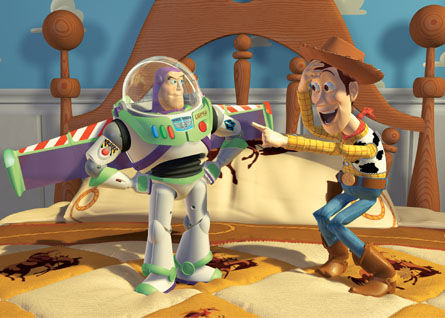But the first 3D graphics system was developed much much earlier. In 1953 U.S. Air Force with support from MIT constructed SAGE (Semi-Automatic Ground Environment), which was a connection between radar and computers. SAGE took informations from radar and created, using computer power, simple 3D images.

The next big step in the development of 3D graphics was, mentioned before, Atari's Battlezone. From a futuristic-looking tank, players fought in a valley surrounded by mountains and volcanoes. Later, Atari modified the game for the Pentagon for U.S. Army training procedures.

In 1988 Autodesk introduced AutoCAD, the earliest computer-aided design software packages for personal computers. Autodesk created something amazing, because from appearance of Autodesk, people has started modelling 3D scenes, not on the paper, but using CAD software.

Then the Pixar took the floor. Pixar's Toy Story was a courageous 3D project. Many movies used a digital enhancement, but none of them was made fully digitally, using only computer 3D graphics, but Toy Story was. Wired magazine called it "arguably the most ambitious computer-generated undertaking yet."

These days 3D graphics has walked to the highest level. 3D scenes are so realistic that human cannot see the difference between 3D image and photography. 3D movies has so advanced features like hair and clothes waving. The calculations taken for the rendering, are 1 000 000 000 more complex than 10 years ago. Virtual reality has become true.

No comments:
Post a Comment